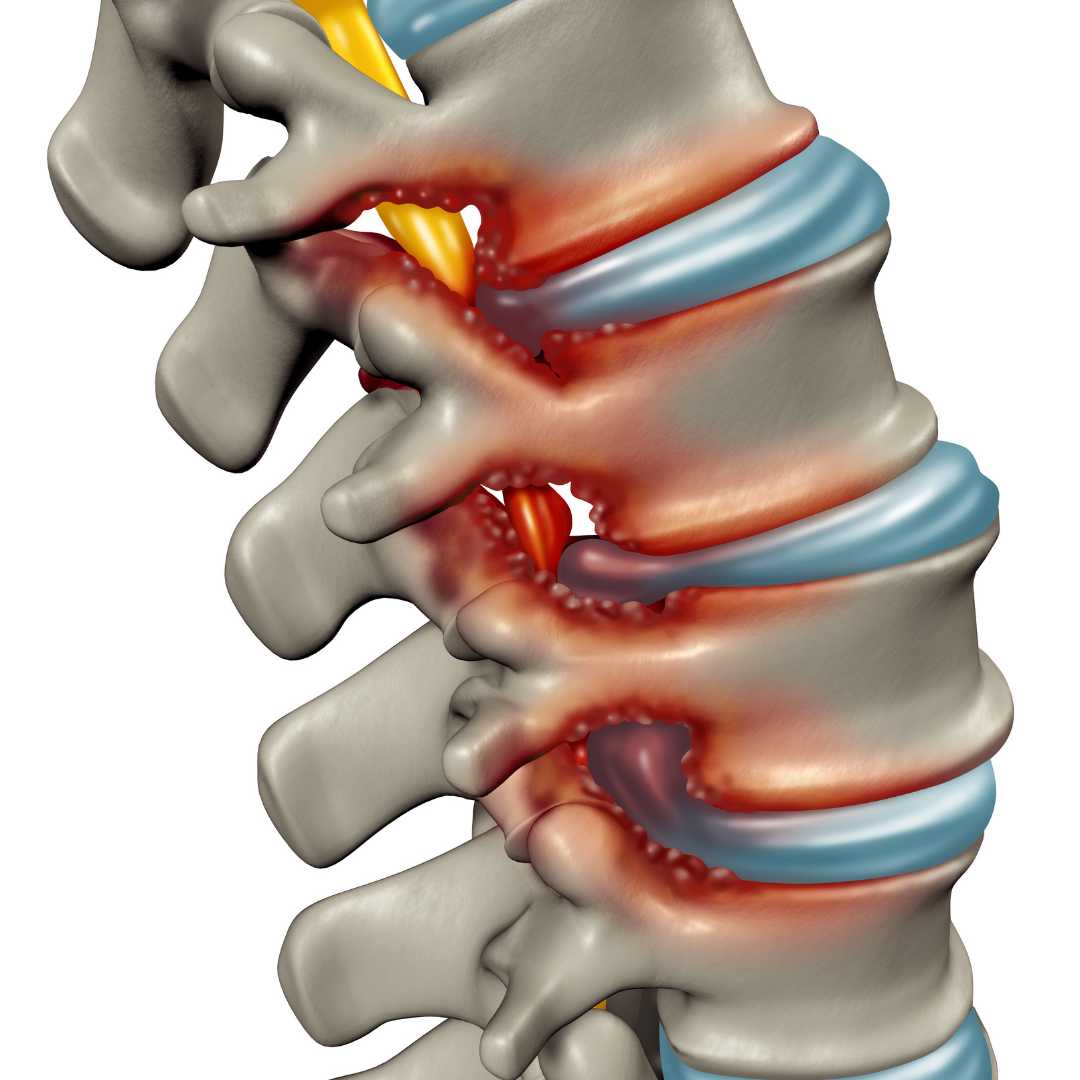Lumbar Laminectomy Costs in Mexico
.jpg)
Living with chronic back pain can be debilitating, often leading to a search for effective treatment, including surgical options like a lumbar laminectomy. For many, especially those in the United States, the high cost of such procedures can be a major barrier.
This is where Mexico emerges as a compelling alternative, offering high-quality medical care at a fraction of the price. The allure of medical tourism to Mexico for spinal surgeries like a lumbar laminectomy is growing rapidly, driven by impressive cost savings and access to skilled surgeons and modern facilities.
The prospect of getting essential surgery without facing financial ruin is a huge relief for countless individuals. When considering a lumbar laminectomy, understanding the cost differential, the quality of care, and the overall patient experience in Mexico is crucial.
This guide will delve into all these aspects, providing you with clear, precise answers to the most common questions about undergoing a lumbar laminectomy south of the border, helping you make an informed decision about your health and finances.
How much cheaper is a lumbar laminectomy in Mexico compared to the US?
The cost difference for a lumbar laminectomy between Mexico and the United States is one of the primary reasons many individuals consider medical tourism. In the US, the average cost for this procedure can vary widely, from around $20,000 to $50,000, and sometimes even higher, depending on the hospital, surgeon's fees, anesthesia, and post-operative care.
These costs are often prohibitive, especially for those without comprehensive insurance or with high deductibles. In contrast, Mexico offers the same procedure at significantly lower rates. Patients can expect to pay anywhere from $5,000 to $12,000 for a lumbar laminectomy in Mexico.
This substantial reduction in cost, often more than half, makes essential back surgery accessible to a broader population. The savings cover not just the surgery itself but can also include travel and accommodation for the patient and a companion, making the overall package highly attractive.
What is the average cost of a lumbar laminectomy in Mexico?
When planning for a lumbar laminectomy in Mexico, it's helpful to have a clear understanding of the average costs involved. While prices can fluctuate based on several factors, most patients report paying within the $5,000 to $12,000 range.
This price usually includes a comprehensive package that covers the surgeon's fees, the anesthesiologist's charges, the operating room costs, hospital stay (typically 1-3 nights), necessary medications during the stay, and often initial post-operative consultations.
It's important to obtain a detailed quote from your chosen clinic or medical tourism facilitator. This quote should clearly itemize what is included to avoid any unexpected expenses. Some packages might even incorporate airport transfers, local transportation, and accommodation, providing a seamless experience for international patients.
What factors influence the cost of a lumbar laminectomy in Mexico?
Several key factors contribute to the variation in cost for a lumbar laminectomy in Mexico. Understanding these can help you better estimate your total expenses and choose a suitable provider.
- Clinic and Hospital Reputation: Highly accredited hospitals with state-of-the-art equipment and international certifications (like Joint Commission International) may charge slightly more, reflecting their higher standards and advanced technology.
- Surgeon's Experience and Specialization: Renowned neurosurgeons or orthopedic spinal surgeons with extensive experience and specialized training might have higher fees. Their expertise, however, can be invaluable for complex cases.
- Complexity of the Procedure: A straightforward single-level laminectomy will be less expensive than a multi-level procedure or one that involves additional techniques like spinal fusion, if required due to the patient's condition.
- Type of Anesthesia: While general anesthesia is standard, specific patient needs or preferences might slightly alter the cost.
- Length of Hospital Stay: The standard stay is typically 1-3 nights. Extended stays due to complications or patient request will incur additional charges.
- Pre- and Post-Operative Care: Some packages include all consultations, follow-up visits, and even initial physical therapy. Others might charge separately for these services.
- Location within Mexico: Major medical tourism hubs like Tijuana, Cancun, Guadalajara, and Monterrey might have slightly different price structures compared to smaller cities, reflecting local operating costs and competition.
Is the quality of care for lumbar laminectomy in Mexico comparable to the US?
The perception of medical quality in Mexico can sometimes be a concern for prospective patients. However, it's important to distinguish between the entire healthcare system and the specific facilities catering to medical tourists. Many hospitals in Mexico, especially those targeting international patients, uphold very high standards of care that are often on par with, or even exceed, those found in the United States. T
hese facilities often feature:
- International Accreditations: Many hospitals hold certifications from organizations like Joint Commission International (JCI), which signifies adherence to rigorous global standards for patient safety and quality of care.
- State-of-the-Art Technology: They invest heavily in modern diagnostic equipment, surgical tools, and operating room technology comparable to leading hospitals worldwide.
- Highly Qualified Medical Staff: A significant number of Mexican surgeons, particularly those specializing in neurosurgery or orthopedics, receive training in the US, Europe, or other well-regarded international programs. They often speak fluent English and are board-certified in their specialties.
- Focus on Patient Experience: Medical tourism hospitals often provide a highly personalized and attentive patient experience, with dedicated coordinators and excellent nursing care.
Are Mexican neurosurgeons qualified for lumbar laminectomy?
The qualifications of medical professionals in Mexico, particularly specialists like neurosurgeons and orthopedic spinal surgeons, are a crucial consideration for anyone contemplating surgery abroad.
You can rest assured that many Mexican surgeons are exceptionally skilled and well-credentialed. Many top Mexican surgeons:
- Have received training and completed residencies in prominent medical institutions within Mexico, the United States, or other developed countries.
- Are board-certified by the relevant Mexican medical councils, ensuring they meet national standards of expertise.
- Are members of international medical associations and regularly attend conferences to stay updated on the latest surgical techniques and technologies.
- Possess extensive experience in performing a high volume of complex spinal surgeries, including lumbar laminectomies. When researching clinics, always inquire about the surgeon's credentials, experience, and any international affiliations they may have. Reputable medical tourism facilitators can provide detailed profiles of their affiliated surgeons.
What are the benefits of choosing Mexico for back surgery?
The benefits of opting for a lumbar laminectomy in Mexico extend beyond just the financial savings. Patients often find a combination of factors that make it an attractive choice:
- Significant Cost Savings: As discussed, the primary driver is the dramatic reduction in cost compared to Western countries, making essential surgery affordable.
- Access to Quality Care: Many medical tourism hospitals boast modern infrastructure, advanced technology, and adhere to international safety and quality standards.
- Experienced and Qualified Surgeons: A wealth of highly skilled, often internationally trained, surgeons specialize in spinal procedures.
- Reduced Wait Times: Unlike in some public healthcare systems where patients might wait months for elective surgery, appointments and procedures in Mexico can often be scheduled much more quickly.
- Personalized Patient Experience: Clinics catering to international patients often provide a higher level of personalized attention, including English-speaking staff, patient coordinators, and comprehensive support throughout the medical journey.
- Proximity to the US: For American patients, Mexico's close proximity makes travel relatively easy and less time-consuming compared to flying to other continents.
What risks should I consider when getting a lumbar laminectomy in Mexico?
While the benefits are considerable, it's wise to be aware of potential risks when seeking medical care abroad. Being prepared and informed can help mitigate most concerns.
- Varying Quality Standards: Not all clinics or hospitals in Mexico are created equal. It's crucial to research thoroughly and choose internationally accredited facilities with a proven track record.
- Communication Barriers: While many medical tourism staff speak English, there might be instances of language differences, particularly with auxiliary staff.
- Travel Complications: Traveling shortly after surgery can pose risks. Ensure you have clear post-operative instructions and understand any travel restrictions.
- Continuity of Care: Follow-up care once you return home can sometimes be a challenge if your local doctor is not familiar with the specifics of your surgery in Mexico. Plan how you will manage post-operative rehabilitation and ongoing care.
- Legal Recourse: In the unlikely event of medical malpractice or complications, legal recourse in a foreign country can be more complex than in your home country.
- Unexpected Costs: While initial quotes are comprehensive, always have an emergency fund for unforeseen complications or extended stays.
How long is the recovery period after a lumbar laminectomy?
The recovery process after a lumbar laminectomy is a crucial part of the overall treatment and requires patience and adherence to medical advice.
- Immediate Post-Op: Patients typically spend 1-3 days in the hospital for monitoring and pain management. During this time, nurses will assist with movement and basic needs.
- First Few Weeks: Upon discharge, patients are advised to limit strenuous activities, lifting, and twisting. Walking is encouraged to promote circulation. Pain management will continue, and physical therapy often begins to restore strength and flexibility.
- 2-4 Months: Most patients can gradually return to light activities and work within 2-4 months, depending on the nature of their job and individual healing rates. Continued physical therapy is usually recommended to maximize recovery and prevent re-injury.
- Full Recovery: While significant improvement is usually seen within a few months, full recovery and the maximum benefit from the surgery can take up to a year. It's vital to follow all post-operative instructions, including exercises and activity restrictions, to ensure the best long-term outcome.
What should I look for in a medical tourism provider for back surgery in Mexico?
Selecting the right medical tourism provider is paramount to a successful and safe experience. Here's what to prioritize:
- Accreditation and Certifications: Ensure the hospital or clinic is internationally accredited (e.g., JCI) or recognized by reputable medical bodies.
- Surgeon's Credentials: Verify the surgeon's qualifications, experience in lumbar laminectomy, board certifications, and any international training.
- Transparency in Pricing: Request a detailed, itemized quote that clearly states what is included (surgery, anesthesia, hospital stay, medications, follow-ups) and what is not.
- Comprehensive Packages: Look for providers that offer all-inclusive packages that might cover airport transfers, accommodation, and a patient coordinator.
- Patient Testimonials and Reviews: Seek out genuine reviews and success stories from previous patients to gauge their experience.
- Communication and Language Support: Confirm that English-speaking staff and translators are readily available.
- Post-Operative Care Plan: Understand what kind of follow-up care is provided both in Mexico and how it can be coordinated with your local doctor upon return.
- Emergency Protocols: Inquire about their procedures for handling complications or emergencies.
Can I combine a lumbar laminectomy with a vacation in Mexico?
The idea of combining a medical procedure with a leisurely vacation can sound appealing, especially given Mexico's beautiful tourist destinations. However, for a lumbar laminectomy, which is an invasive back surgery, a period of careful recovery is essential.
Immediately after surgery, your body needs rest and recuperation. Engaging in typical vacation activities like sightseeing, long walks, swimming, or strenuous travel could compromise your recovery and potentially lead to complications. Most surgeons will advise against anything beyond light activity for several weeks post-op.
That being said, a "recovery vacation" could be an option. This would involve:
- Staying in a comfortable, quiet accommodation after discharge from the hospital.
- Focusing solely on rest, gentle walks (if cleared by your doctor), and following post-operative instructions.
- Enjoying a peaceful environment without the pressure of active tourism.
It's crucial to discuss any travel or activity plans with your surgeon before your procedure to ensure they align with a safe and effective recovery. Prioritizing your health and recovery should always come first. For seamless access to affordable, high-quality healthcare solutions worldwide, including lumbar laminectomy in Mexico, explore PlacidWay.
We connect you with top medical facilities and experienced specialists, guiding you through every step of your medical journey. Discover how PlacidWay can make your healthcare experience stress-free and cost-effective.


.png)
.png)







.png)





Share this listing